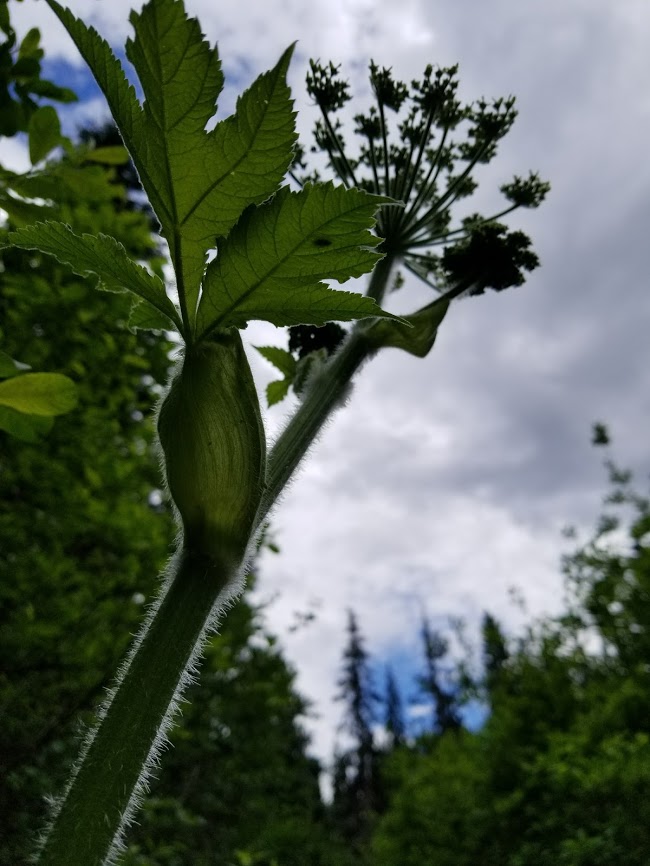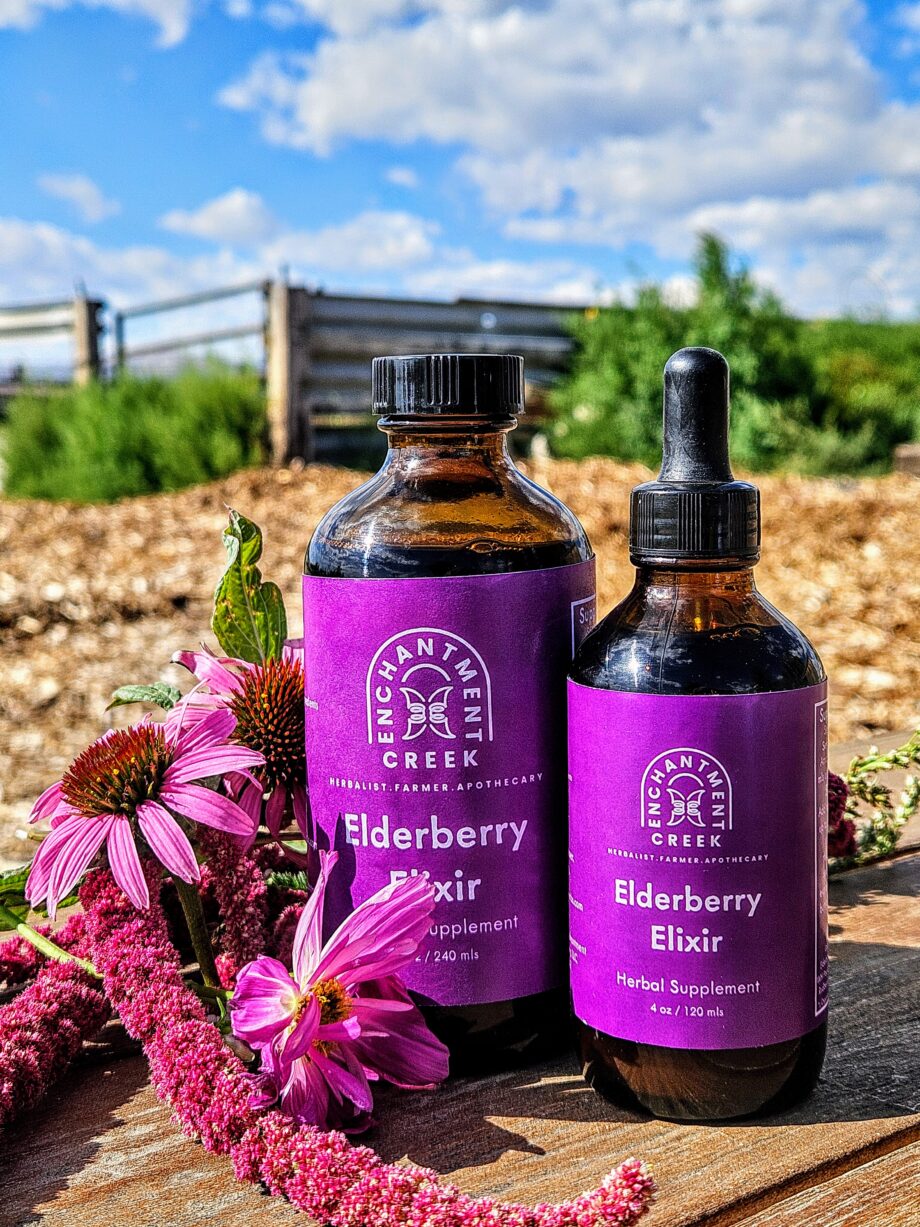Osha, Angelica & Lomatium
The Rocky Mountains called to me for many years before I answered them. I packed up and ventured out to a life only slightly known to my soul. The move was 989 miles of highway to the sweet mountain valley south of Jackson Hole.
I didn’t come to ski, though I did my fair share of climbing up mountains to surf the snow down… not a bad way to get through the long winters out here. What called to me so loudly and perfectly were my high mountain plants. Not only are they strong, and sturdy, they are full of resinous medicinal goodness.
They remedy and soothe, strengthen and support so perfectly that modern science is now looking more closely. As their constituents prove to show links as to how they can work so very well to strengthen our bodies. Their list of uses goes on in a seemingly never-ending path of health, and medicinal wealth. These plants have such a capacity of remedying many ailments.
This was the calling of the mountains that I answered, and being here now for 6 years, the incredibly close connection I have with these high mountain growers is something I could never turn my back on.
How Can You Ever Choose a Favorite…
It is an incredibly difficult task for an herbalist to choose a favorite plant. Sometimes I feel that it is impossible for me to state one as my favorite. As I choose one while walking in the forest. I may step 5 more paces to land upon another best friend of mine. Though… we must start somewhere I guess, and these three are up there for me.
It has been a belief of mine since beginning my herbalist path over a decade ago, that plants are there for the people and animals who are also with them. Where they are, their region, their ecosystem and neighborhood. In the east where ticks are full of the life altering autoimmune disorder, Lyme, Kudzu Root has become a prolific grower… This is one of the prime herbs for helping the immune system deal with Lyme… coincidence?
Osha (Liguisticum ficinium)
is one of those plants for the Rocky Mountain communities and those of mountainous regions in general. The Osha we are blessed with in the Rockies is a large root of the parsley family (Apiaceae). Its root is commonly the size of two fists clenched together. Year old plants the size of a large garden carrot.

Robust in size matching the fern like foliage that is above ground. Its delicate umbel flower heads are sweetly smelling. Then, when you dig the root, a fermented, maple syrup and butterscotch scent surrounds your direct vicinity. It is unmistakable and once smelled becomes a scent that sticks to your nostrils… A smell you can always remember. So powerful it takes you back to the exact place and time you first smelled it.
Liguisticum porteri is a prolific healer. Those of us who have worked with it, used it, and healed from it know and love this gorgeous parsley plant. I adore it and use it often for the following; It is exceptional for strengthening systems plagued with asthmatic conditions.
Not only does it provide immune support that doesn’t stimulate in the way Echinacea angustafolia or purperea do. It also takes lung capacity to heights of 40% more than without (check these studies out). With numbers like these, lung capacity, stamina, alertness and sustainability in the body will be at an all-time high. As it supports the immune system via circulation it is a very safe immune remedy. Many can use it even when conditions of auto-immunity are present.
Remedy Of the Region
The activities, and severity of our climate here in the rocky mountains, herbs like Osha are perfect for our other passions and our strife’s. Many activities; winter mountain climbing and travel, summer hiking, camping and heavy workload. Then the relentless cold and flu season, that can sometimes come twice, even thrice per year. General high mountain living, we suck air with less oxygen and experience a thickening of blood. Plants like Osha deliver a dose of stamina that enhance our overall well being.
Lung Tonic Anyone…?
I know that I have mentioned this herb as possibly being a tonic to us who live at elevation. This belief is because of the many uses it possesses. I always feel like I get through winters feeling more vital and energized when I am chewing and taking Osha regularly.
It has such strong antiviral properties. It also keeps me well. The best part? I have not, nor have the other herbalists in my region, noticed it becoming less effective over time. I would like to play with it topically as well.
Truly… I love this plant with all my green herbalist heart. I hope that it becomes a regular in your home medicine chest too. It is found in many of my blends because of who I work with, and how amazingly effective it is for so many conditions of the body and life.
Angelica spp.

Angelica senensis, and the like, is another regal plant of the forest here in our region. Another root that smells so deliciously it sticks with you through the weeks in scen tand mind. The root is massive, also matching the up to 7 feet tall stalk above ground.
It is more robust than Osha root, and the qualities are matching of their diversity. Top of the list it is a strong and perfect bitter remedy. Not only does its taste seem pleasing to add to aperitifs. But the strength and encouragement it gives to the digestive system is not something to ignore.
Digestive Tonic For Deep Winter…
When the tundra is frozen 4 feet deep in places. Most of Wyoming is covered in a blanket of snow, greens are more than scarce. Fresh plants, saps, and scents of the forest are long gone in summer months behind us. But we look forward to spring, and make the most of our winter by making sure we still venture outside. We pick up random hobbies at home, and cozy up with our loved ones close to our stoves.
Movement is important through this frozen period of the year, and sometimes it is hard to find the motivation. When your bed is so cozy in the morning you find yourself hitting snooze again, and again. What does this lack of inspiration do for our insides?
Slow Winter Season
Wouldn’t it make sense that they too slow down, become sluggish and uninspired? To say that I feel that like I feel the cold would be about right. It seems harder to digest, and slower to move through my body. With blood traveling to the stomach after a meal, it leaves the extremities that now need something extra for warmth or will become stiff with the cold.
So, our digestion, with out freshness, and easy warmth, lacking in minerals. In the summer time, we can easily ingest these vital nutrients from the garden and forest floor. A little encouragement, and circulation enhancement would I believe do a lot of good. Not only for assimilation of nutrients, but efficiency as well. Stamina to retain and create its own warmth so that we don’t end up with a sluggish elimination system.

This is one of the key offerings from this regal plant Angelica. It is spicy, but sweet, strong, but gently encourages our bodies to do what they do best; WORK! ELIMINATE! ASSIMILATE! So that all our system can and will be fed, nourished, encouraged, and THRIVE. Winter time is the most difficult for all these aspects to be achieved. So, gentle but strong, sweet and spicy, stimulating and encouraging components of our favorite mountain herbs will do you good!
Desert Parsley… Lomatium dissectum
The final herb is one that has been documented being used for centuries. The native people of our region would harvest it in the fall to process the root for safe keeping. Its nickname thus became biscuit root. Lomatium would be ground into a powder, by hand. Then formed into cakes that resembled a biscuit. These little cakes would feed the native familys through the winter. They were moistened and made into loaves of bread, that nourished them through the winter.

Desert Parsley, better known to botanists and herbalist as Lomatium dissectum. Another prolific grower of the Rocky Mountain region. Her foliage emerges early in the spring time with Osha and Angelica. It’s leaves are greatly separated into tiny leaflets. Forming a delicate, lacy structure along creek beds, hiking trails,and sunny open slopes.
In early spring, when the leaves just begin to grow. Lomatium, Osha and even Angelica species are easily confused with its deadly cousin. A word of caution with this group of fauna, as it contains the deadliest plant of the Americas, Water Hemlock. One of the parsley cousins who loves to grow along moving water with its feet wet. Be mindful and know your botany before you go into the woodlands to harvest any of these plants.
Subtly Famous
Lomatium is not only famous for its food preservation by the native people. It also saved thousands of lives during the Bird Flu Epidemic of the 1920s. It was said, that those who took tincture of Lomatium were not ones who perished. The numbers of the dead were in the millions.
We can start to see how beneficial Lomatium is to our winter time strife’s. It, along side the other favorites in this article, is one who can nourish, stimulate, and encourage general well-being. It proves to be one of the favorite herbs of the Rocky Mountains and beyond.
Frequent Ingredients
These plants are continuously found in my remedies that are for sale, and ones in my personal medicine chest. My family takes them regularly for auto immune conditions of the lungs, and to keep their immune systems strong.
Residents of the Rockies are not ones to stay inside through the winter. With animals to care for, and assist in winter time birthing. Springtime farm projects to tend to, and prepare for. Generally, we are found bundled up in the cold air. Our feet warm in wool, hands covered, and have become masters at layering our clothes. With our herbal allies in our systems working their magic, we can work hard all year long, even through the dark, frozen times of deep winter.





